- Growth Marketing Definition
- The 3 pillars of the Marketing Growth Strategy
- 1. Product Market Fit
- 2. The AARRR Method
- 3. Retention
- Growth marketing vs Growth hacking
- Being a growth hacker: What is growth marketing?
- How to set up a Growth Marketing project in 5 steps? Case Study
- What techniques work for growth marketing?
- 12 Growth Marketing Tools according to your needs
- Conclusion: Growth marketing strategy
In this article, we are going to talk about Growth marketing. I will explain what it is and especially how to use it for your business.🚀
You’ve all heard about it, it’s still very fashionable today, ofteAn associated with the startup world.
But growth marketing can benefit everyone: SMEs, self-employed, freelance startups … So we then see how and why. 😉
Growth Marketing Definition
Growth hacking is a strategy consisting in boosting the growth of a company by using a set of digital and marketing techniques to quickly and significantly accelerate the company’s growth To achieve such an approach, we need to understand what marketing is, and then what the definition of Growth marketing is. In this graphic, you can see that marketing only focuses on the “acquisition” and “activation” levers.
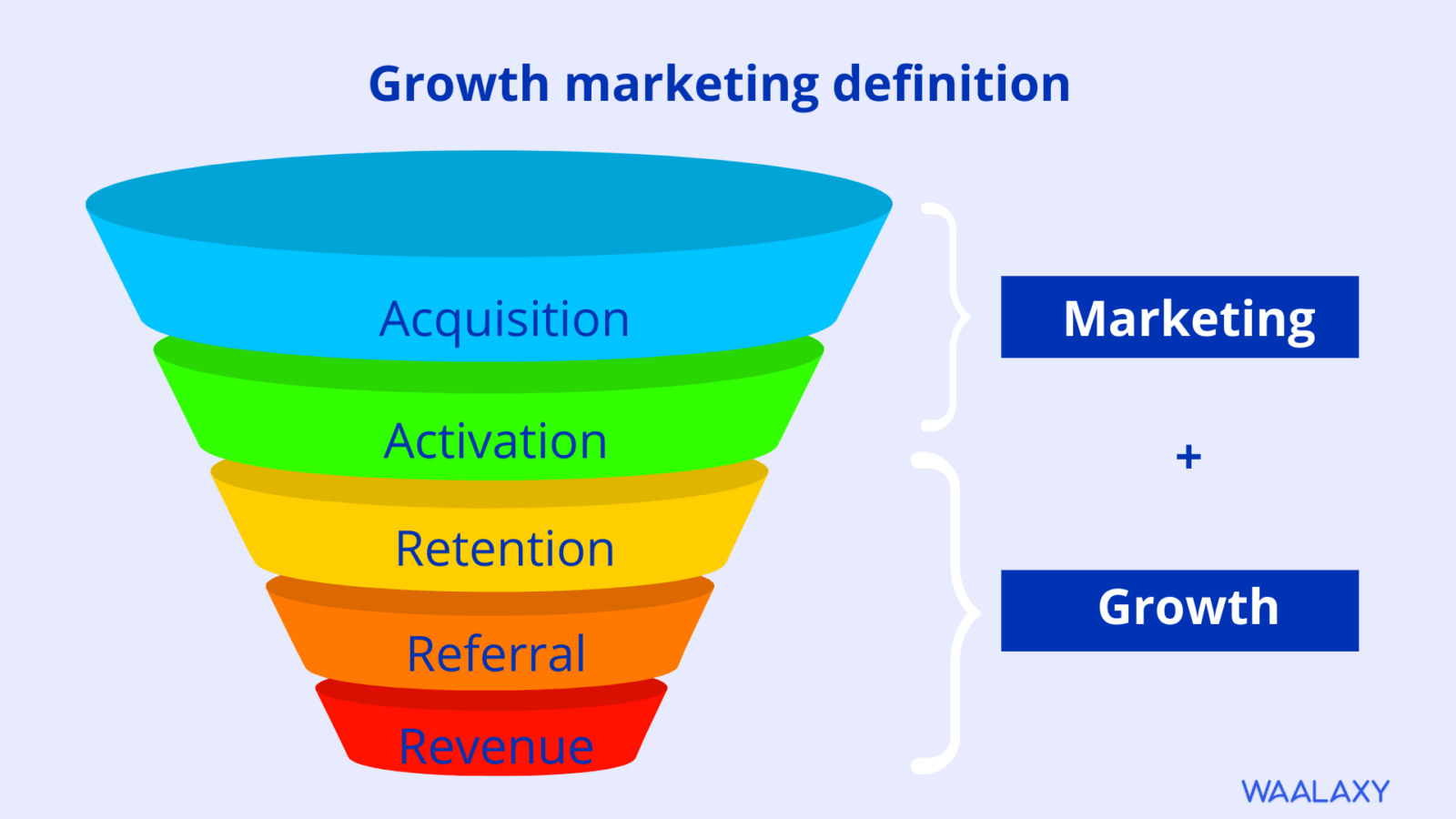
The 3 pillars of the Marketing Growth Strategy
1. Product Market Fit
This is the basis and that some people forget far too easily; the product market fit. It consists of two main points:
- Offer a product or service that your target really needs or wants.
- Obtain absolutely the understanding by your target on what you propose: product, advantages, benefits of its use…
In a nutshell, your product must speak to your audience and the message must be clear. If you haven’t completed this step beforehand, all growth marketing techniques won’t work. ❌
2. The AARRR Method
This framework should be the foundation of your process.
- Acquisition.
- Activation.
- Retention.
- Referral.
- Revenue.
This AARRR framework will be the basis for all your growth marketing tests.
You will have to fill in the following table for each step of the conversion funnel.
You will have to define what each step consists of, apply it to your business and formalize it clearly in this framework.
Growth Marketing Example: How to do acquisition?
Associate all the steps and metrics to measure the ROI. Then move on to the next.
Eventually, you will have to show sub-parts. Let’s take the example of a mobile application: the acquisition can be divided into three sub-stages:
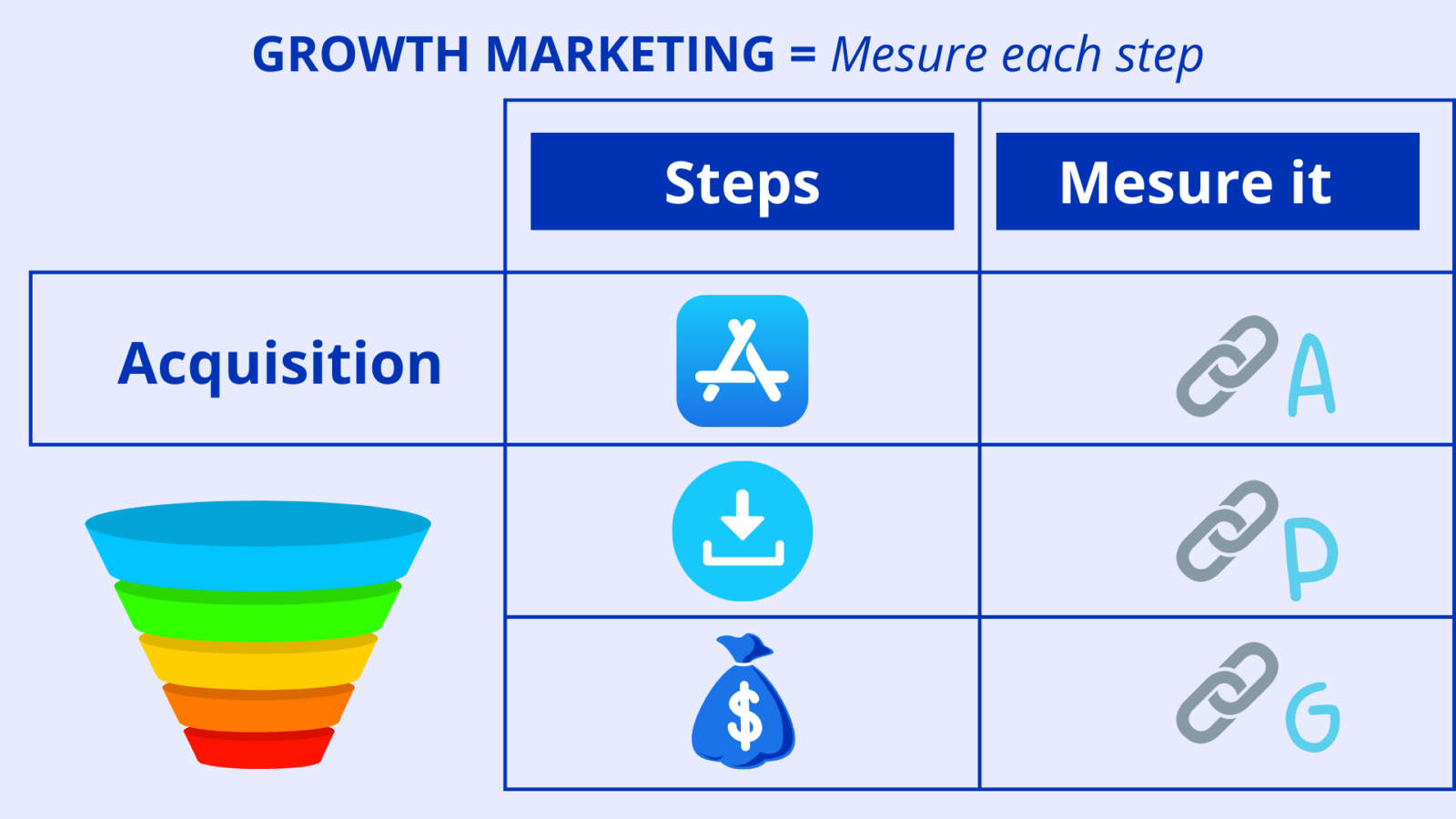
- 🔗A = The number of people who will arrive at the App Store overview page.
- 🔗P = The number of people who will download the tool
- 🔗G = The number of people who will pay.
In each of its stages you will have loss. The second part of the table is to understand what metrics help us find that exact data? In our case, we will create different tracking links.
Let’s keep the same example:
- 523 = The number of people who will arrive at the App Store overview page via the website.
- 57 = Number of people who will download the tool via the website
- 21 = Number of people who will pay through this web strategy.
In our example, we notice that where we lose the most potential customers is between step 1 and step 2. We will therefore have to try to move this metric as a priority.
3. Retention
Of course, it is not a question of trying to improve everything at once. Youhave to prioritize the points that seem most critical at the moment.
To take our example from above and hope for a sustainable growth, you will have to improve the acquisition funnel, but you will also have to keep the customers who have already downloaded the application.
Retention consists in keeping the prospect until the purchase stage. (to retain him).
Be careful not to confuse it with retention, which is no longer a Growth Hacking step, but remains essential for your business.
You will have to work on the retention stage for most types of business, it is the key. The best way to do this is to stay focused on a single metric and make it grow
One test = one period + one method + one metric.
💡 Always keep an eye on your revenue though.
This is known as ONTM, from the English = “One metric that matters”.
And we’ll then use several different types of techniques to get there. (we’re coming to that 👀) The advantage of this process is to be faster and relevant. If we try to optimize everything at once, we’ll get lost in the data.
Growth marketing vs Growth hacking
Invented by Sean Ellis in 2010, who redefined his own job to rename himself Growth Hacker, his activity immediately took on a special resonance within startups. He simply created a new discipline. This discipline focuses on optimizing growth by simply using all possible techniques.
Of course, marketers were doing Growth without knowing it long before that, but it was not part of the established growth strategies in companies.
You may have confused the two, but even though the terms are very similar, we’ll give you the information to distinguish between the two.
Thanks to growth hacking, you will be able to ensure and activate the growth of a company or your product. Its main objective is to increase brand awareness by getting your audience to engage with it.
The objective of a growth hacker is to implement strategies that will allow to promote the development in an effective and efficient way. But his work does not stop there, since he must also find new ways to attract customers and thus sustain the company and build customer loyalty.
The similarities
This is not to say that the two terms do not have some similarities, such as
- Collecting data about users and their behaviors.
- Driving business growth in both acquisition and loyalty/retention.
- Implementing both terms through the agile method. 🥷
The differences
On the other hand, they are not similar on the following terms:
- Growth Marketing focuses mainly on the brand, this is not the case with Growth hacking ❌.
- The time frames for completion are different. In Growth Hacking, you have to be quick, make decisions in the immediate.
- Data. In fact, Growth marketing relies on the data collected to know how to respond to its audiences, which takes time to implement. Growth hackers will go straight to the analysis as soon as the first data is collected.
Being a growth hacker: What is growth marketing?
Growth marketing is a cross-functional discipline that involves the marketing team as well as the sales team, the product team and even the developer. It is still rare to see a Growth team with full powers, even if the job of Growth hacker or Grwoth marketer is developing more and more. The growth hacker needs other resources to perform his tests.
His role is therefore to manage cross-functional projects by putting everyone more or less contributing to this process of rapid experimentation, and of course the CEO must be in total agreement with the “Growth hacking” mentality.
The Growth Hacker job description and Growth Marketer salary
- Diplomas and studies: Bachelor or Master in business school: marketing, business development, commerce… (Not required).
- Experience: At least one successful experience in marketing or growth hacking is highly recommended. If you don’t have this experience, create it by showing the company the test ideas you have for their development and how to realize them.
- Recommendations: Highly useful for this job. (Ask for recommendations on LinkedIn).
- Salary: The average salary is $66,768 per year in the US, when you have experience.
- Type of company: Usually startups (applications, blogs, new technologies, digital marketing..)
- Type of job : In autonomy or with a small team, in close collaboration with several services (marketing and developers..).
- City with the most job offers: Big cities like California, New York, Florida.
Growth Marketing Examples: Companies that used this Strategy
Here are some examples of companies that have successfully used growth marketing to grow their business: 👇
- Airbnb: Airbnb is an online platform that allows individuals to rent rooms and apartments to other individuals. The company has grown exponentially since its inception in 2008 and is now one of the largest short-term rental platforms in the world. 🌎 Airbnb has used growth marketing to grow its business in several ways. For example, the company used social networks to build a strong community of users and followers. She also used email marketing to keep in touch with customers and provide special offers. 🗣️ Finally, Airbnb used influencer marketing to reach a wider audience for its platform.
- Dropbox: Dropbox is an online file storage and sharing service. 🥡 The company has grown rapidly since its inception in 2007 and is now one of the most popular online storage services in the world. Dropbox has used growth marketing to grow its business in several ways. 👉 For example, the company offers a free trial period for its service, which has won over many users. Additionally, the company used viral marketing to advertise its services to users, allowing users to share links to their files with friends and family.
- Uber: Uber is an online platform that allows users to order taxis and ride-sharing services. 🚗 The company has grown exponentially since its inception in 2009 and is now one of the largest people transportation platforms in the world. Uber has used growth marketing to grow its business in several ways. For example, the company offered promotions to new users, which resulted in a large number of registrations. ✍️ She also used influencer marketing to reach a wider audience with her platform. 🚀
These examples show how growth marketing can be a powerful tool to grow your business. 🦾 Using techniques such as viral marketing, email marketing, and influencer marketing, businesses can quickly gain a name and business reputation. 🤩
How to set up a Growth Marketing project in 5 steps? Case Study
Step 1: Brainstorming Growth
This is the most useful part and where you need to be most open-minded. 🧠 It is best to invite as many employees as possible, especially those who are closely involved in the B2B customer experience such as technical support. You can even invite external experts for a specific topic and have a huge backlog of ideas.
Step 2: Prioritize marketing actions
There are several methods to prioritize these ideas, like the ICE method, or the DEEP method:
- D = Detailed each idea you decided to keep.
- E= Estimated the cost and/or time to implement.
- E= Emerge. Select the changes that should appear first to better test the others and adjust the list.
- P= Prioritize ideas and start sprints.

Step 3: Execution
Don’t forget to define for each test the metric that will allow us to follow the results:
A test = a period + a method + a metric.
Refer to your metrics table to fill it with the new tests. Think about it: 💡 What is not measurable cannot be part of a Growth Hacking technique.
Step 4: Analyzing the results
Take your chart back here and in front of each metric write down the results.
Here is an example of A/B test marketing done by Waalaxy:
- One test = Newsletter subscription.
- One period = 3 weeks per button then change it.
- One method = Test 1: Add Firstname, Test 2: Change color, Test 3: Classic.
- A metric = Number of people who subscribe to the newsletter.
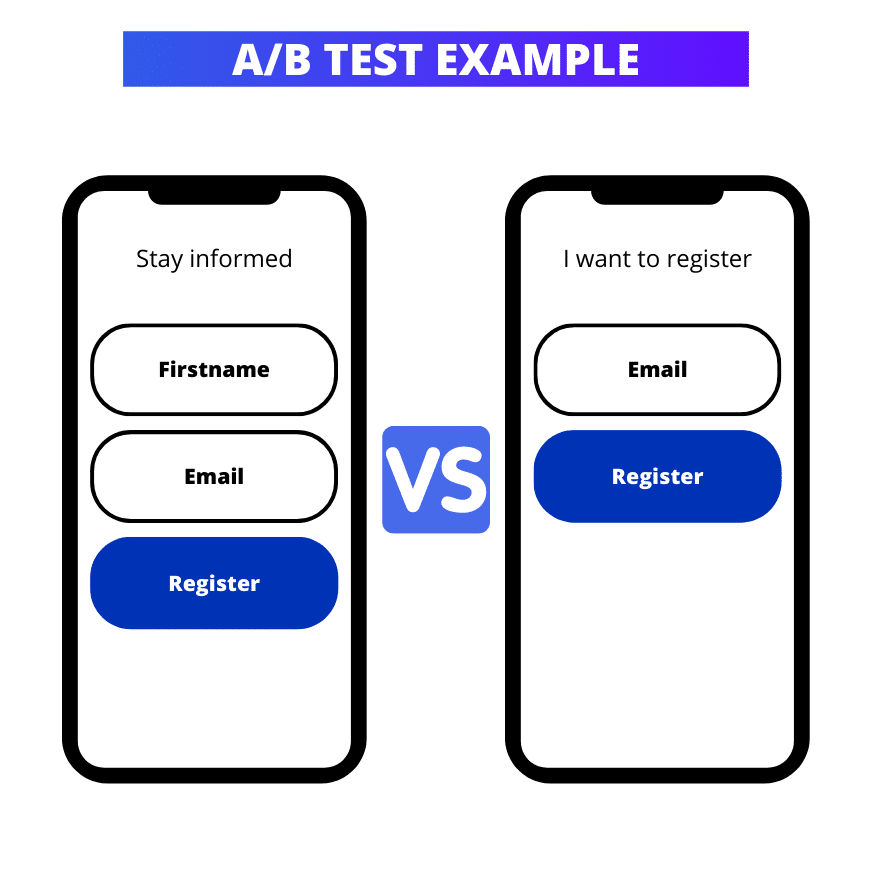
In this case we notice that test 2 is more conclusive than the others.
Step 5: The new strategy
Once we have analyzed that we have 3,7% of additional registration with the test 2, we will have to keep this button for the registration of the Newsletter. This type of personalized strategy allows for quick and easy growth of the company.
There are many other practices, which we will see together. Once we’re done with this test, we’ll set up the new landing from example 2, and move on to another idea. 💡
What techniques work for growth marketing?
- A/B Test.
- Data scraping.
- Prospecting automation.
- Database enrichment.
- Competitive intelligence
- Social media strategy.
- Cross channel.
What we just saw is one of the most common growth hacking techniques, A/B Testing. There are other more or less technical methods:
Data scraping
Data Scraping consists in finding data of users who could be interested in what you sell. The goal is to be able to contact them, via cold Email or a B2b social network like LinkedIn. Data scraping is very powerful and is becoming more and more important in the growth business. > How to discover and do scraping. 👀
Automation of prospecting
Prospecting automation, also called marketing automation, allows you to contact thousands of people in just a few minutes, while personalizing your approach. This technique, combined with data scrapping, allows you to automatically find as well as contact your prospects. The most popular types of automation are LinkedIn message automation, emailing and also cross channel. (On both channels at the same time).
Database enrichment
There are several external services or tools that can clean up your databases and update them based on your targeting. 🔢 Often, it helps to know how real prospects we have going and how to better approach them. Enrichment often offers key information: LinkedIn profile, phone number, position… Be careful to choose the right tools though.
Competitive intelligence
Monitoring is a big part of growth marketing. 🔍 It’s super important to analyze and understand how the competition is achieving their results, the goal being to boost your idea backlog and always have new techniques to test.
Social media marketing
Normally we wouldn’t really put community management in growth hacking, but thanks to the new powerful data scrapping tools, the community manager becomes a formidable weapon, not only to boost brand awareness! For example, with Waalaxy, you can add in your CRM all the people who commented one of your posts on the networks and send them a personalized message automatically. See the Hack. 👀
The Cold Email
Unlike traditional emailing, the prospect who receives one of your cold emails has never heard of you before. You’ve certainly scrapped their data and found their contact. It is therefore an ideal way to automatically approach new potential customers. You then need to follow the Cold email formatting rules. 😜
Multi channel marketing
Finally, multi channel marketing is everything I just mentioned, but at the same time. 🤯 That is, you usually have one see two tools or everything is integrated. You can have both a lead management CRM + email and phone number enrichment + a LinkedIn and email automation tool…
In short, all this in one tool, simple and effective. There are a few on the market and I invite you to look at our comparisons to decide.
Otherwise you can already, like them, choose the best one.
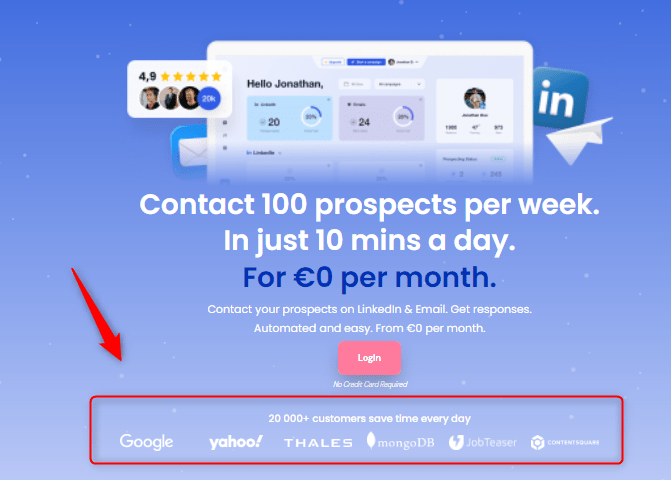
12 Growth Marketing Tools according to your needs
Waalaxy, Podawaa, Dropcontact, Lemlist… You hear tool names everywhere, but it’s too many names and not enough clear information for you? Here is a short summary!
Doing A/B Testing with…
- To create free tracked links, Recommended tool = Campaign URL Builder.

- to customize and shorten the links. Recommended tool = TinyURL. (Free).
- (optional) Fivesecondtest, to help you perform A/B Tests.

- Google Analytics, can be very useful to analyze your results (click rate, bounce rate..).
Scrape data with…
- For LinkedIn, email addresses and business phone number = Waalaxy.

- To scrape a bank of images or files = TabSave.
- For Twitter, Instagram and web pages like eBay = CaptainData.

- To scrape data on TikTok = TikTok Scraper.
Automate your prospecting, enrich your database and make cross channel…
- The only 3 in 1 tool, Waalaxy.
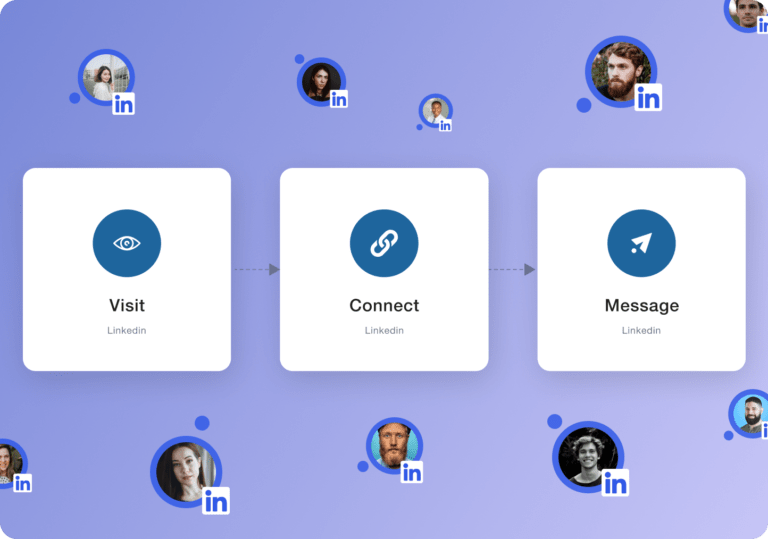
A good competitive intelligence..
We don’t necessarily recommend using a tool, but to often go explore your competitors’ sites and social media to see where they stand.
- For SEO, and blog analysis, Ahref.
Our favorite growth hack? Go to Ahref and look at what articles are working best for your competition.
- For current trends, Wide Narrow.

- Competitive intelligence on prices, products, barcodes, competitive web technologies, Agenty.
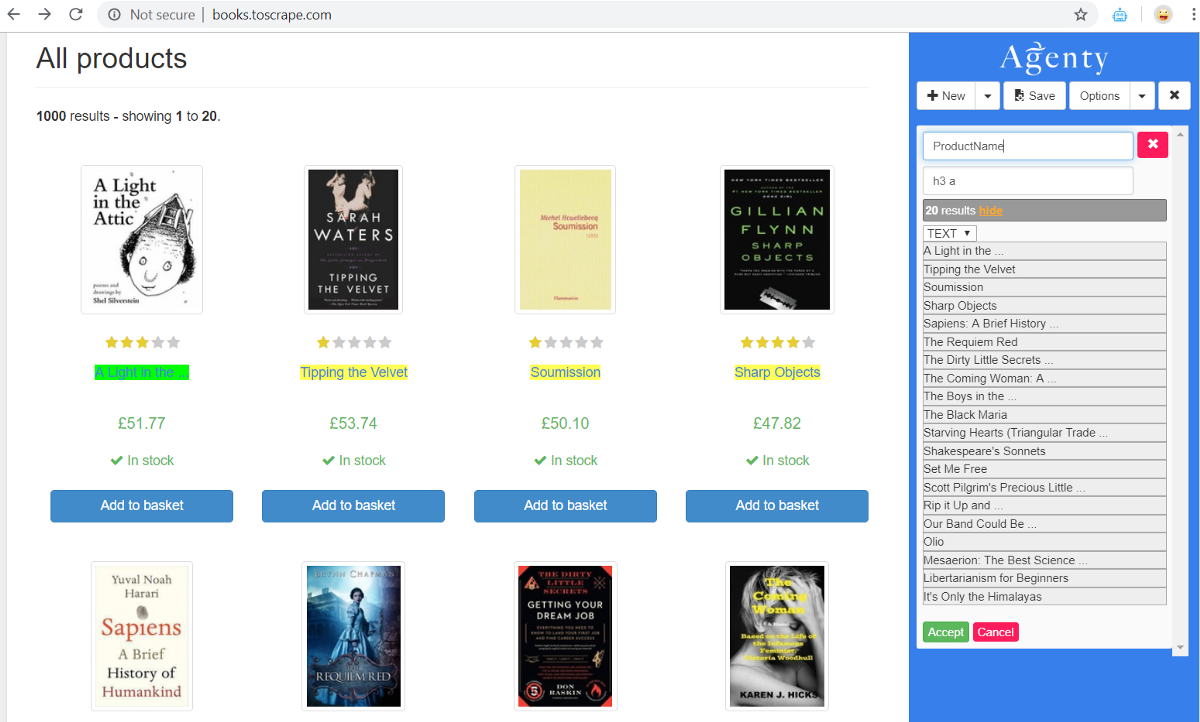
Combine community management and growth marketing..
- To improve the number of views and comments, Pods boost the reach of your publications on social networks. Recommended tool = Podawaa.
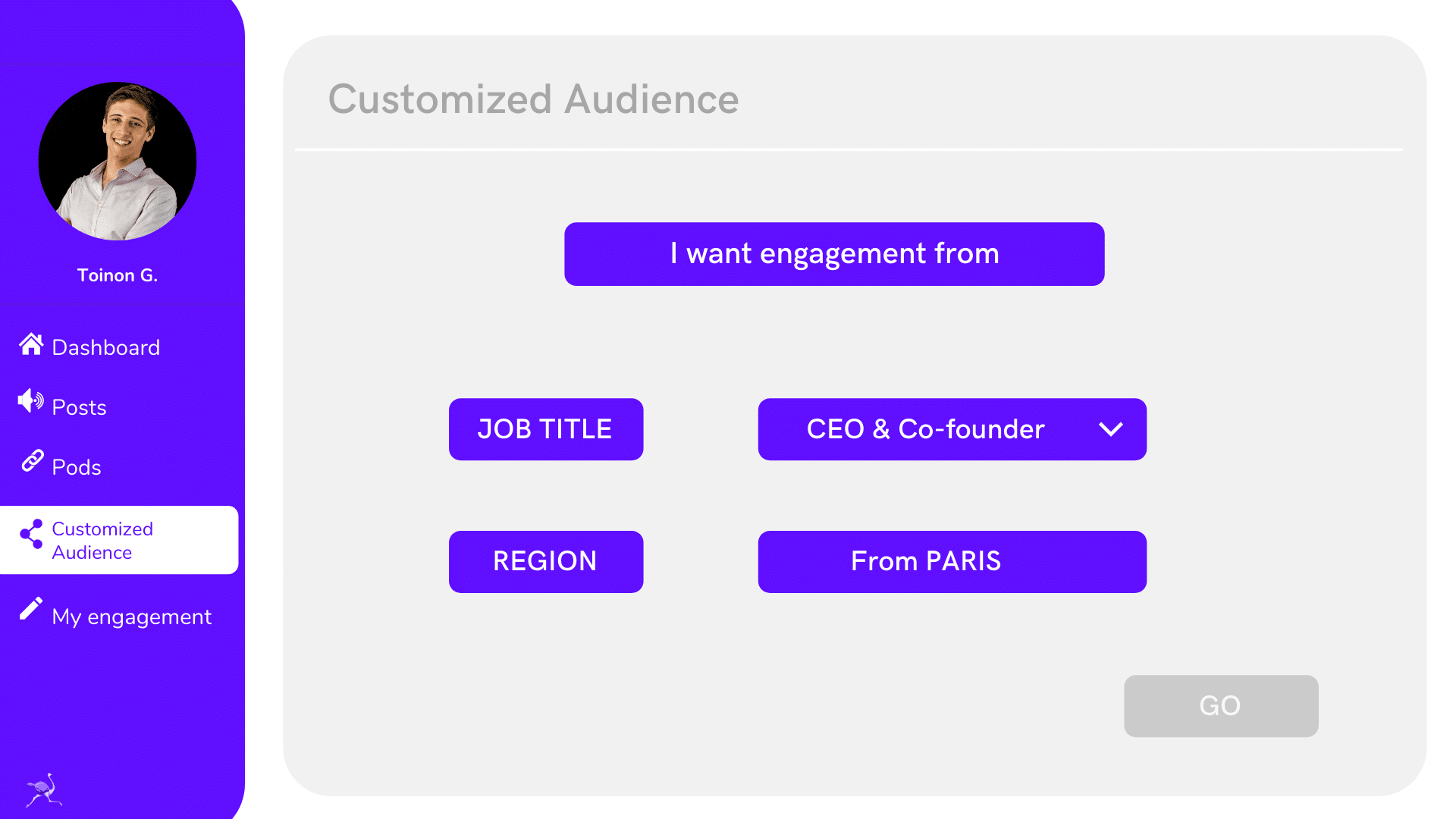
- To get the leads that comment on your LinkedIn posts into your CRM. Recommended tool = Waalaxy.
- To get your followers on Instagram; Suggested tool (not tested by our teams) = Botser.
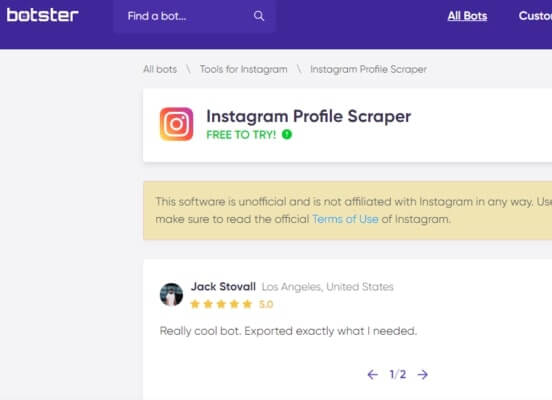
Conclusion: Growth marketing strategy
Here is a recap of what we saw in this article on growth marketing: ⏬
- Growth marketing definition,
- The 3 pillars of the strategy: Why do Growth marketing?
- Growth marketing vs growth hacking
- What is growth marketing?
- Growth Marketer job description (salary).
- How to set up a Growth Marketing project in 5 steps?
- What techniques work for growth marketing?
- 12 Growth marketing tools according to your needs.
That’s it! 💫 Now you know all about growth techniques. 😉
FAQ of Growth Marketing
In this article you found out what is Growth Marketing, but also what are the process and resources to implement it, and finally, you know 12 tools to get started depending on your goals and needs. But since we’re not sure we’ve said everything, here’s a Faq, which I hope will answer your last questions. 😉
Growth marketing Manager: What does he do?
The manager, or “head of Growth” He leads the teams. Generally, he is the link between the Growth team, the marketing team and the developers. He can also have the role of Scrum Master, i.e. Project Manager.
Are there growth marketing agencies?
Yes, there are more and more digital marketing agencies specializing in growth: Ladder.io, Tuffgrowth, Growth Shop, We Scale Startups, The Growth Machine…
Since this is a new process, some companies prefer to be in the hands of experts to grow their business. I personally think that all skills can be acquired with the right tools and tutorials, and that it is always better to have an internal Growth Hacker. Choose Growth training instead of external services 😉
Inbound marketing & Growth: The difference
Some of you are looking to know if there is a difference between the two. As a reminder, inbound marketing is the strategy by which the customer comes to you through:
- Good Branding,
- Relevant content on a blog (SEO),
- A strategy on social networks,
The customer comes to you because you provide value.
Growth is going to allow you to have even more people coming to you, but more importantly, is going to be the lever that will make them buy your products. So yes it’s different. 😉
As a reminder:

What is the cost of growth marketing?
On average, the cost of growth marketing is $60 per month.
Of course, it can cost you 0 to $100 per day, it all depends on the tools you want to buy. But if you buy a subscription from an all-in-one tool like Waalaxy (see pricing 👀), then add some free add-on tools for tracking links and analytics for example, Growth hacking doesn’t cost you much.
The bulk of your budget will go into hiring a skilled team, good at Growth Marketing. 😉









